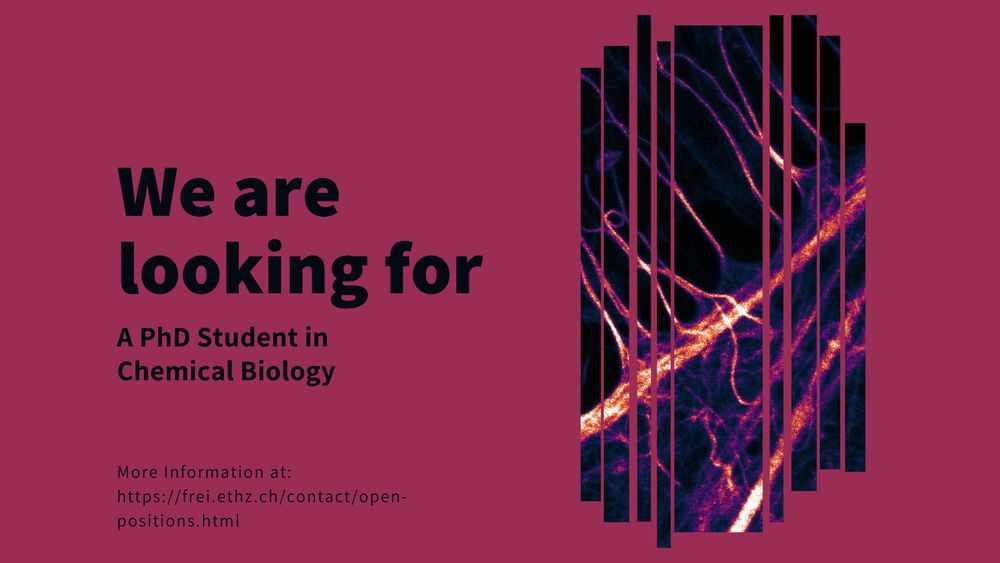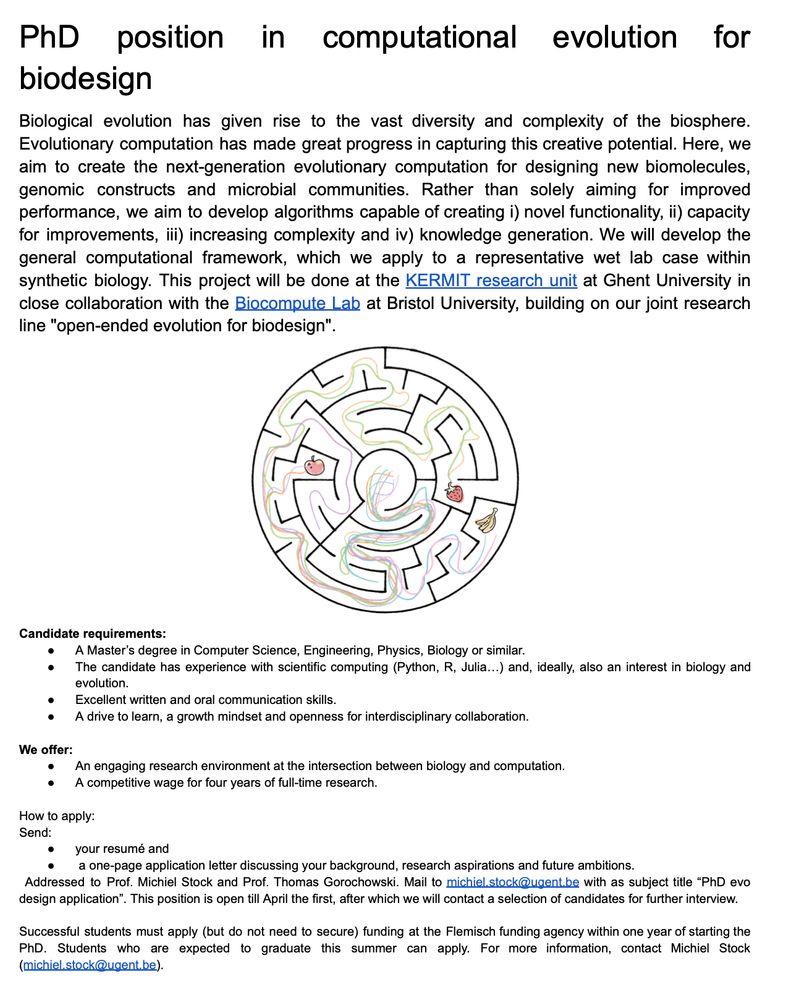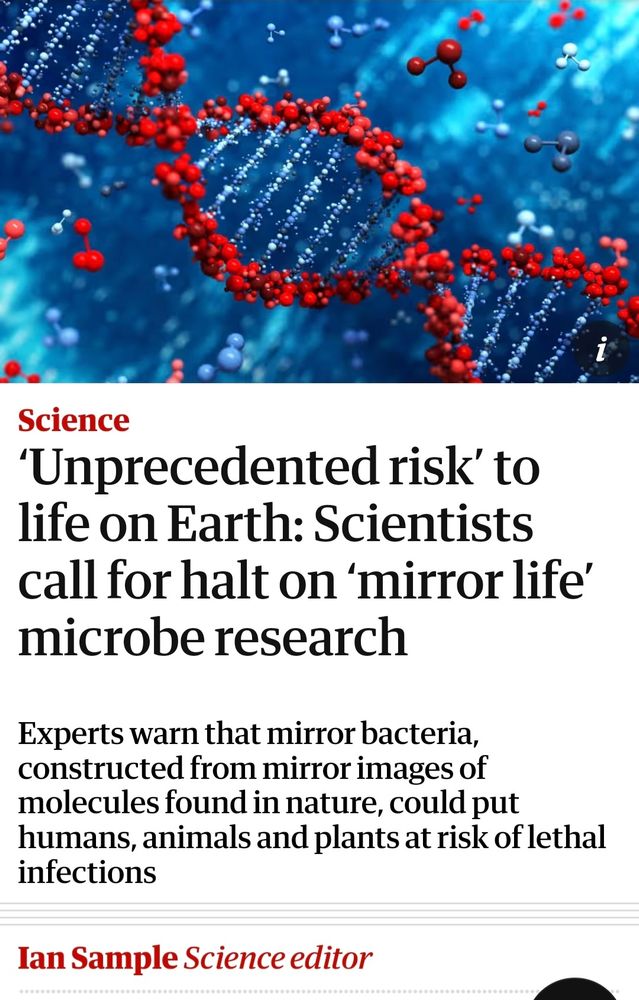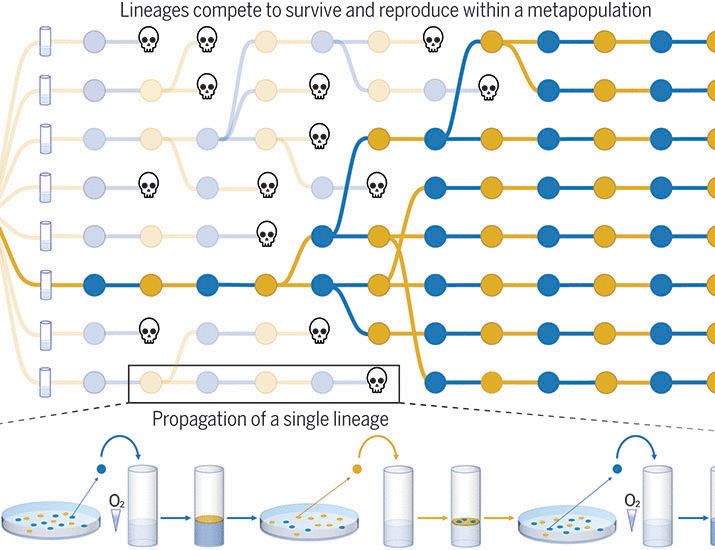Generative design of synthetic gene circuits for functional and evolutionary properties https://www.biorxiv.org/content/10.1101/2025.09.26.678595v1
28.09.2025 03:03 — 👍 5 🔁 3 💬 0 📌 0
OpenBind
🚨 We’re hiring!
The OPIG group is looking for multiple postdocs to join OpenBind, an open science initiative generating foundational structural biology data to power the next era of AI/ML for drug discovery.
opig.stats.ox.ac.uk
openbind.uk
17.09.2025 16:05 — 👍 2 🔁 2 💬 1 📌 0
It’s an exciting possibility!
16.09.2025 10:24 — 👍 0 🔁 0 💬 1 📌 0
Has been so cool to follow this fantastic work, congrats! Conclusion mentions “improving the release efficiency by enhancing the specific heat absorption rate of the nanoparticles” could this enable multiplexed control - different frequencies activating different nanoparticles in the same cell?
02.09.2025 09:45 — 👍 1 🔁 0 💬 2 📌 0

A. Structure of AsLOV2 PDB~2V1A (Halavaty, 2007) with mutations resulting in MagLOV~2 highlighted. Spin transitions driven by radio-frequency (RF) fields in the presence of a static magnetic field are optically detected via fluorescence measurements on an otherwise standard widefield microscope. Similar effects have recently been observed in other protein systems (Burd 2025, Meng 2025, Feder 2025).
B. Simplified photocycle diagram in the case of a large external magnetic field.
C. A single cell expressing MagLOV 2 displaying an MFE of ~50% (measured as a change in fluorescence intensity in the presence of an applied field). For MFE measurements, the magnetic field was switched between 0 mT and 10 mT.
D. Black dots: data from a single cell expressing MagLOV 2 displaying an ODMR signal with ~10% contrast. The static field B_0 is ~21.6 mT. Blue line (shade): the mean (std) of all single cell data in a field of view (~1000 cells).
E. The static magnetic field B_0 was varied by adjusting the magnet's position, and ODMR spectra recorded. Red-lines are Lorentzian fits. Blue line is a theoretical prediction (i.e. is not a fit) of the expected resonance frequency of an electron spin with $\bar\gamma_e$=28 MHz/mT.

Electronics, radio electronics, optical parts, and an animal sized MRI coil are assembled to perform fluorescence MRI measurements using MagLOV.
MagLOV quantum sensing update! Much improved imaging (>10% single cell ODMR contrast), detailed characterisation and simulation, and new experimental demonstrations taking us a step closer to applications.
www.biorxiv.org/content/10.1...
SI: www.biorxiv.org/content/10.1...
21.08.2025 13:59 — 👍 9 🔁 2 💬 0 📌 0
Now out in JACS. pubs.acs.org/doi/full/10....
Grateful to thoughtful reviewers who found some errors in our model and encouraged us to make a better one! A renaissance in magnetobiology is coming...
15.05.2025 16:04 — 👍 25 🔁 7 💬 0 📌 0

Advertisement for PhD position
My lab at @ethzurich.bsky.social is looking for a motivated PhD student. We develop chemical tools for advanced fluorescence microscopy 🔬 and work at the interface of synthetic chemistry ⚗️ and protein engineering 🦠. Sharing with skilled Master students appreciated. More info at tinyurl.com/2dbjk5ty
08.04.2025 08:06 — 👍 22 🔁 18 💬 1 📌 1

NEW PREPRINT! Do you think we can do better when characterising resource competition properties of gene circuit modules? If no, think again; if yes, you’re in for a pitch how exactly we can do that – automated culturing, cybergenetic control and all! 1/
doi.org/10.1101/2025...
04.04.2025 09:22 — 👍 5 🔁 3 💬 1 📌 0
New spin resonance measurements with fluorescent proteins out this month from Burd et al., following the still mind-blowing result from @andrewgyork.bsky.social and @mariaingaramo.bsky.social that if you create a selection pressure for a quantum system, nature will oblige! 🧪
14.03.2025 10:48 — 👍 2 🔁 0 💬 1 📌 0
Legitmately thrilled to share our latest work, in which @fernpizza.bsky.social solved an experimental challenge in plasmid biology as old as the field: measuring how plasmids compete and evolve within individual cells!
21.02.2025 20:42 — 👍 218 🔁 87 💬 5 📌 11

PLOS statement on recent US Executive Orders and scientific integrity - The Official PLOS Blog
Since its founding over twenty five years ago PLOS has been dedicated to advancing open science, ensuring that knowledge is accessible to…
Bravo @plos.org!
US exec orders "stand in direct conflict with our core values, our mission, edit policies"
"PLOS will not compromise on issues of scientific rigor & editorial integrity... we seek diversity because more expert voices make for better science"
theplosblog.plos.org/2025/02/plos...
21.02.2025 14:45 — 👍 357 🔁 120 💬 2 📌 12

Red colored protein model of the Avena sativa LOV2 domain (PDBID: 7PGY)
This Valentine's day I want to share the LOV2 with you! ❤️
Roses are red,
the light is blue,
stimuli are read
by the domain LOV2.
14.02.2025 17:25 — 👍 3 🔁 2 💬 1 📌 0
My lab does cool stuff 👇
13.02.2025 13:28 — 👍 1 🔁 0 💬 0 📌 0

Looking for a #PhD that is at the intersection of #biodesign, #synbio, #openendedness, #evolution? Look no further. Great supervisory team too 😉
01.02.2025 04:08 — 👍 15 🔁 18 💬 1 📌 0

How to Apply and Funding
Two weeks to go until the application deadline for ILESLA. If you or anyone you know would benefit from full funding to carry out a PhD in Life and/or Environmental Science please visit/refer to our website page iles.web.ox.ac.uk/how-apply where you can see open day videos and get full guidance.
16.01.2025 14:10 — 👍 20 🔁 27 💬 1 📌 20

A profile picture of Douglas Prasher from Martin Chalfie's Nobel Lecture
Do you know who Douglas Prasher is? Many don't, even though he is the person who cloned the original #GFP gene in the late 1980s. In my short history of plant light #microscopy I also cover a bit of his story - & why he is relatively unknown today, despite the importance of his work. See this 🧵👇
20.05.2024 14:19 — 👍 285 🔁 150 💬 3 📌 24

The one time @theguardian.com could rightly use a left-handed DNA image... and they choose right-handed 🤦🏻♂️🤦🏻♂️🤦🏻♂️
@iansample.bsky.social
13.12.2024 08:18 — 👍 134 🔁 22 💬 3 📌 7
Thanks! Yeah I don't know why he is unsearchable, same for me. (@support.bsky.team)
06.12.2024 15:40 — 👍 1 🔁 0 💬 0 📌 0
👋 also @mariaingaramo.bsky.social and @andrewgyork.bsky.social
05.12.2024 08:45 — 👍 1 🔁 0 💬 1 📌 0
Much of the cloning overall, as well as experimental work and computational analysis for this figure was brilliantly carried out by @vincentspreng.bsky.social, who is currently interning in our lab. MagLOV can only be studied through deep interdisciplinary collaboration! 🧪
29.11.2024 13:14 — 👍 2 🔁 0 💬 0 📌 0
Reflecting on the two days of #sbuk24 talks on the very slow journey home, I think my favourite was Scott Stacey from Harrison Steel's group.
Lovely demonstration of complexity built from simple biology that needs modelling to fully understand an unexpected result
28.11.2024 20:09 — 👍 10 🔁 2 💬 2 📌 0
Physics reporter at Science News magazine
"Absolutely the best journalist to talk to about neutrinos."
she/her
De novo evolved proteins. @bornberglab.bsky.social. he/him.
bornberglab.org/people/eicholt/
Aiming to establish Synthetic Biology as a key discipline in Germany
Serving as a common hub to connect an interdisciplinary and inclusive SynBio community
Learn more on our website https://gasb.de/de/
German Conference on Synthetic Biology www.gcsb2026.de
Neuroscientist. Studying neuronal circuit development, chemical senses, and light microscopy-based connectomics. Professor at Kyushu University.
Website: https://www.lab.med.kyushu-u.ac.jp/dn-en/
X: @TakeshiImaiLab
DPhil student on the Engineering Biology CDT
University of Oxford
PhD at the University of Adelaide | Synbio, CryoEM, X-ray crystallography, Biocatalysts |
Exploring #ComputationalBiology & #Bioinformatics + Documenting my learning journey | Built by @noureldenrihan.bsky.social | 🌐 djosergenomics.github.io
The backend of biotech. AI, datacenters, and the systems powering the future of life sciences.
Microscopic farmer 🔬🌺
Microscopy core director @UNC Chapel Hill
Former plant developmental biologist
R&D Scientist@ICOB Imaging Core, Academia Sinica, Taiwan
https://weichenchu.com/
https://eabias.github.io/
https://www.linkedin.com/in/weichen-chu/
https://orcid.org/0000-0002-3447-9043
PhD in Quantum Biology at Stellenbosch University in South Africa, Founder of QSouthAfrica
Neuroscientist at the Paris Brain Institute / www.dejuansanzlab.org / ERC / FENS-Kavli Scholar / Young Academy of Spain / CNRS
Laboratory of Biophysical Chemistry of Macromolecules (LCBM) headed by @beatfierz.bsky.social at EPFL | Run by LCBM members
Studying metabolic evolution, microbial macroevolution, biospheric self-organization, and the feedbacks between Earth and life. Dad, Husband, Scientist.
https://rogierbraakman.com/
Biomedical Engineering PhD Student at Georgia Tech
In truth, only atoms and the void
Assistant Professor at UPenn. Synthetic immunologist & computational biologist. Using DNA synth, multiplex assays and generative models to understand & engineer immune cell signaling & function. Church lab alum.
Web: www.dbgoodman.com
PhD student in structural biology with @greening.bsky.social and @knottrna.bsky.social at Monash Uni. (he/him)
Interested in hydrogenases, evolution, protein design.
💻 https://www.jameslingford.com/
















